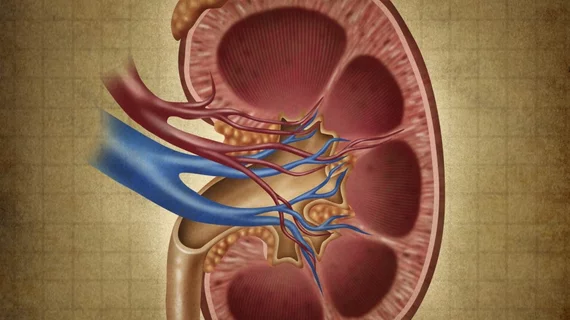Research shows biopsies of renal masses, image-guided tumor ablation can be performed at the same time
Biopsies of renal masses can safely be performed at the same time as image-guided tumor ablation (IGTA), according to a new study published in the Journal of Vascular and Interventional Radiology.
“Biopsy performed before ablation can provide histologic information that may influence treatment planning, whereas cost, safety, and convenience are considerations for concurrent biopsy and ablation,” wrote Michelle S. Tsang Mui Chung, MD, with the department of diagnostic imaging at the Warren Alpert Medical School of Brown University in Providence, Rhode Island, and colleagues. “The purpose of this study was to determine the diagnostic yield of renal biopsies performed for patients referred for IGTA and the frequency with which biopsy results would have obviated the need for subsequent ablation.”
The authors reviewed an internal database of 401 consecutive percutaneous renal mass IGTAs performed from April 2000 to April 2015. Thirty-two were excluded, leaving 369 incidents in 342 patients. The IGTA was performed with biopsy more than 85 percent of the time. All biopsies used CT fluoroscopy guidance and were performed by experienced interventional radiologists.
Where there was a biopsy, the results were classified as malignant or suspicious more than 82 percent of the time, likely benign more than 9 percent of the time and definitively benign more than 2 percent of the time. Overall, the IGTA was supported by biopsy results more than 97 percent of the time.
“In conclusion, biopsy of renal masses with suspicious imaging features rarely obviated the need for IGTA,” the authors wrote. “Given the low frequency of benign renal masses in patients selected for IGTA, biopsy can safely be performed concomitantly with ablation.”
The authors added that their study did have some limitations, including its retrospective nature and “lack of technical standardization.”

